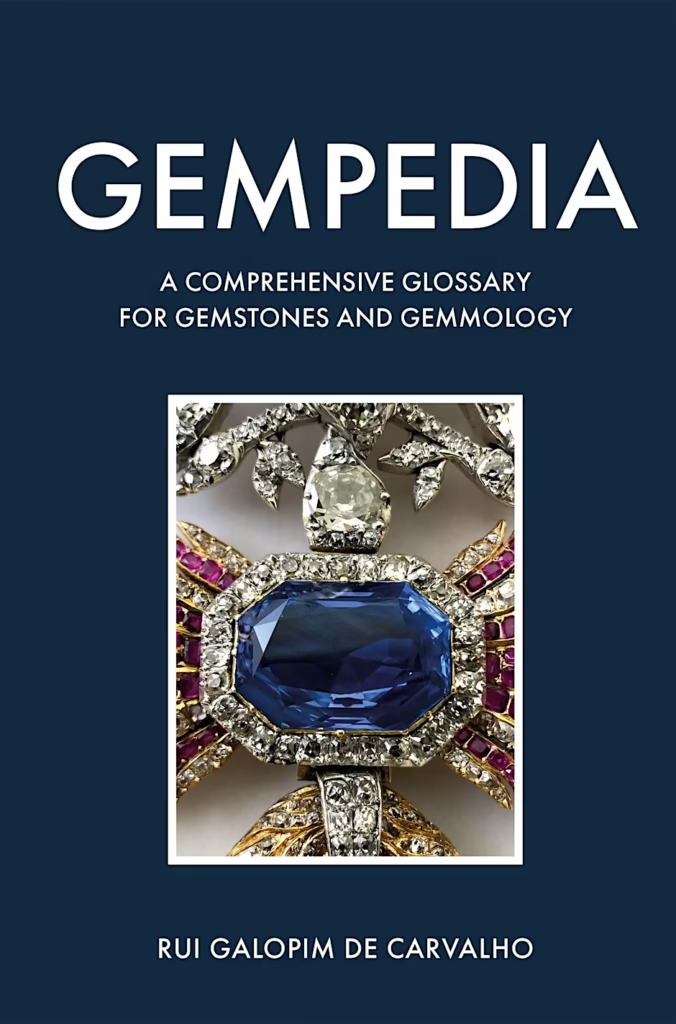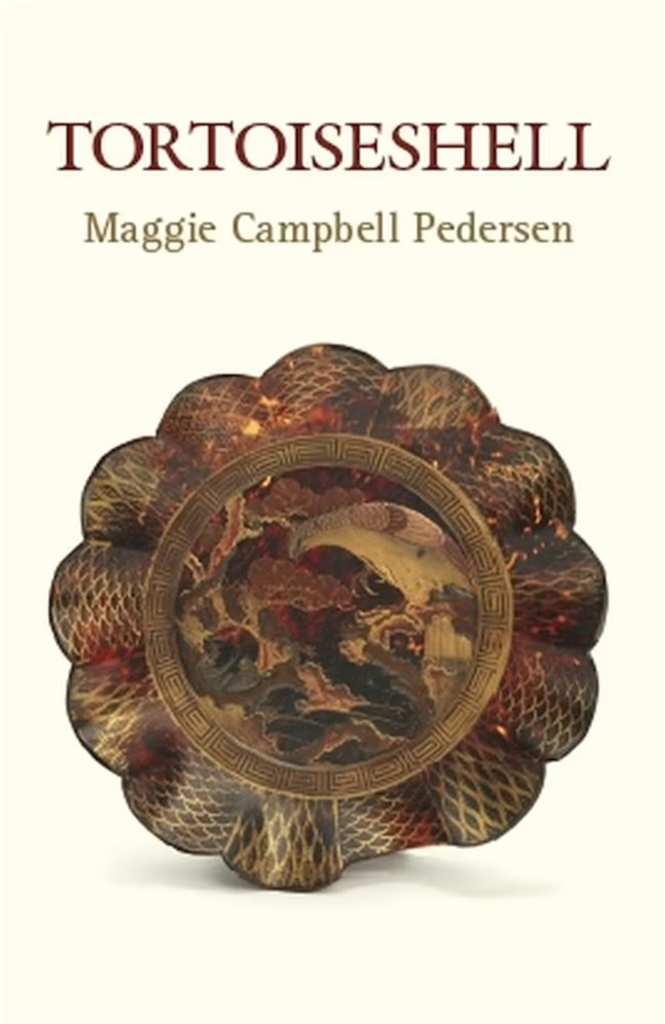
Chalcedony: Agate, Quartz & Jasper
Quartz gemstones provide the jewellery trade with more varieties than any other gem species. Here, Gem-A Tutor Pat Daly FGA DGA explores one of the subdivisions of quartz – chalcedony – and discovers the stones (and challenges) that new and experienced gemmologists will discover in the field.
Some quartz varieties, such as amethyst, citrine, and rose quartz, are cut from single crystals, but more are polycrystalline. This means that a stone is composed of many interlocking crystals. Some polycrystalline quartz gems have individual crystals which are large enough to be seen with a loupe, but those of others may be so small that they are not visible through an optical microscope. Problems of terminology begin here.
Microcrystalline or Cryptocrystalline?
Some authors state that chalcedony is microcrystalline, meaning that crystals can be seen with a microscope, others that it is cryptocrystalline, and that they cannot, and some use both terms. In any case, these definitions of micro- and cryptocrystalline depend on the type of microscope used and the way in which the stone has been prepared. The lesson for gemmologists is that hard and fast boundaries do not exist in nature or in many aspects of the gem trade. Where differences between gem varieties are concerned, this ought to be borne in mind.

Chalcedony polished stones and cabochons, photographed by Pat Daly.
What is Chalcedony?
It is generally agreed that chalcedony is a quartz gem composed of very small crystals which cannot be distinguished with a loupe or a standard gemmological microscope. Most types, such as chalcedony, agate, and jasper are included in this description but coarser grained varieties, such as aventurine and tiger’s eye are not.
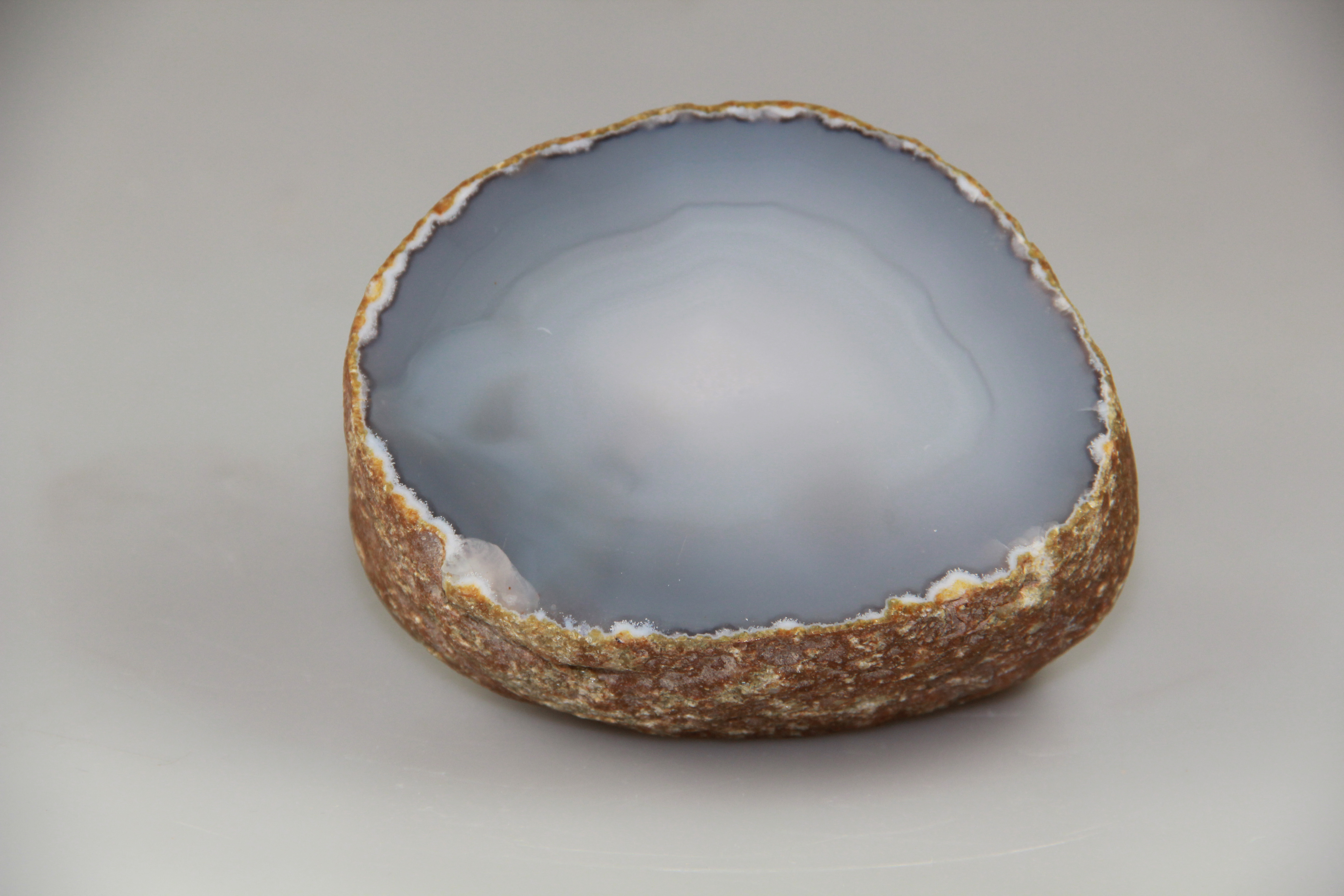
Chalcedony specimen from the Gem-A Archives, photographed by Henry Mesa.
Types of Chalcedony: Agate
Agate is a type of chalcedony which occurs as nodules, often in spaces which were once bubbles in volcanic rocks. It grows inwards from the walls of the cavities as fibrous crystals of quartz and often, though not always, it is marked by concentric colour bands. The fibres radiate out from nucleation points, forming a series of domes which compete for space as they grow. Structural banding, parallel with the advancing growth surfaces, is always present even if colour banding is absent.
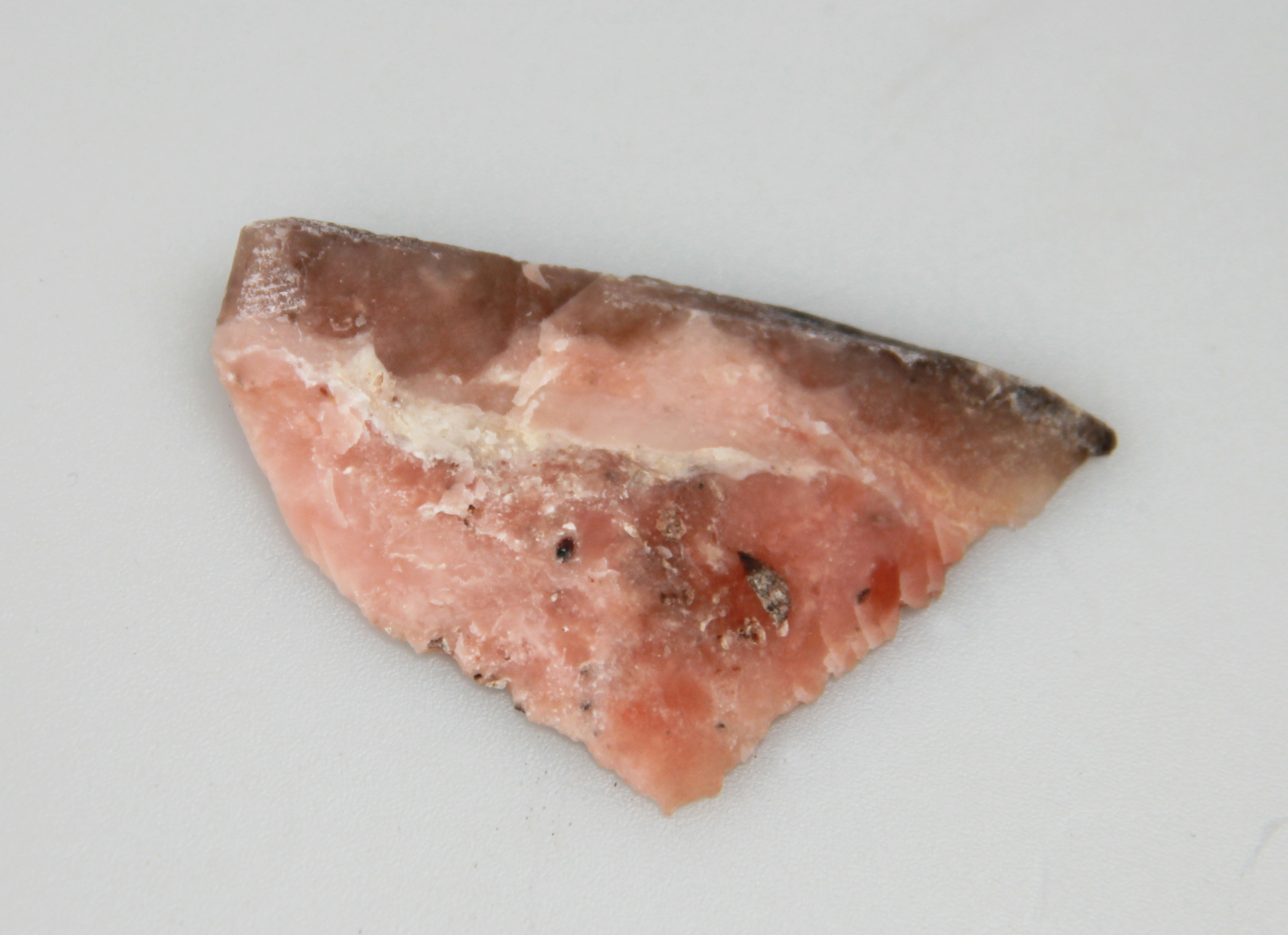
Pink chalcedony from the Gem-A Archives, photographed by Henry Mesa.
A slice of translucent agate held a little way in front of a torch or light bulb shows the fibrous structure, concentric banding, and the boundaries between the dome-like masses of radiating fibres. In a stone cut from an agate, the fibres and banding may not be evident, but it is usually possible to see these boundaries. Some material which grows in this way would be called chalcedony in the gem trade because the term is often used for stones of uniform colour.
Colour Banding in Agates
Colour banding in agates may be curved and concentric, or straight. Agates which have complete concentric banding are called fortification agates because of their resemblance to the ramparts of hill forts. Straight-banded agates are called onyx. They are useful for cutting cameos and intaglios, tabular gems with carvings on one side. Any colour may alternate with white, but the name onyx is used mostly for black and white-banded stones. Nowadays, the name onyx is often given to uniformly black stones. The objection that this material should be called dyed black chalcedony is often disregarded.

Agate with concentric bands photographed by Pat Daly.
Many agates from Brazil, which is the main commercial supplier, are grey to brownish, and unsuitable for jewellery. They may be dyed to any colour, however, and both uniform and banded types are common.
Favourably oriented agates may present the image of a landscape, small concentric features resembling eyes, or features resembling candle flames. Fine examples of landscape agates are valuable stones. Crystals may grow into cavities which are later filled with agate. They are usually replaced by agate and form sprays or sunburst patterns within the stones, which are called sagenitic agates. Agates may be named after a locality where they are found, but there are so many of these that a keen interest in the stones is required to remember them.
Iridescence in Agates
Iridescence is a feature of some agates, in which concentric structures are so regular and closely spaced that they act as diffraction gratings. Iris agates display iridescence in transmitted light, and some do so in reflected light. Thin film interference is responsible for the play of colour of fire agates. At some stage, a bumpy growth surface of these stones was coated with a thin layer of a brown mineral, the thickness of which was just right to cause iridescence. When growth of the agate continued, the layer was enclosed and protected inside the stone.

Agates photographed by Pat Daly.
Any colour may be seen in agates but the commonest are grey to blue and brown to pink and red. When a cavity is only partly filled by agate, well-shaped crystals may grow in the remaining space. These may be amethyst or rock crystal, or of some other mineral, such as calcite. A nodule of this kind is called a geode.
The unqualified term chalcedony is usually taken to refer to material of a uniform colour. Carnelian (cornelian), for example, is a brown to orange stone which often shows agate structures. A darker, browner type is called sard and there is no clear boundary between the two varieties. Straight-banded white and brown to orange stones are called sardonyx. Like onyx, this is suitable for cameos and intaglios.

Varieties of agate from the Gem-A Archives.
Types of Chalcedony: Chrysoprase
There are several green chalcedonies. Chrysoprase is a bright green variety coloured by nickel. Chrome chalcedony, also called mtorolite and by other names, is coloured by chromium. Prase, a poorly defined material described as dull leek green or light green, has been said to be quartzite (a rock), chalcedony and single crystal quartz. It is an excellent example of a term which has been so loosely applied that it is hard to use with any confidence.

Dyed agate (left) and chrysophrase, photographed by Pat Daly.
Dyed green agate is often seen in the jewellery trade. It may be distinguished from chrysoprase and chrome chalcedony because these rarely display agate structures, which are common in dyed agate. The Chelsea colour filter and the spectroscope can also be used to separate these stones.
What is Jasper?
Jasper is impure chalcedony. Colours are mostly red, yellow, green and white, often in patches and bands. Inclusions of iron oxides and clay minerals reduce translucency as well as adding colour, so jaspers are usually opaque, while most other chalcedony is translucent. Impurities cause the colours of some chalcedonies as well, so the dividing line between these materials is not clear cut. Jaspers do not usually display large scale agate structures, but small agate patches are common.
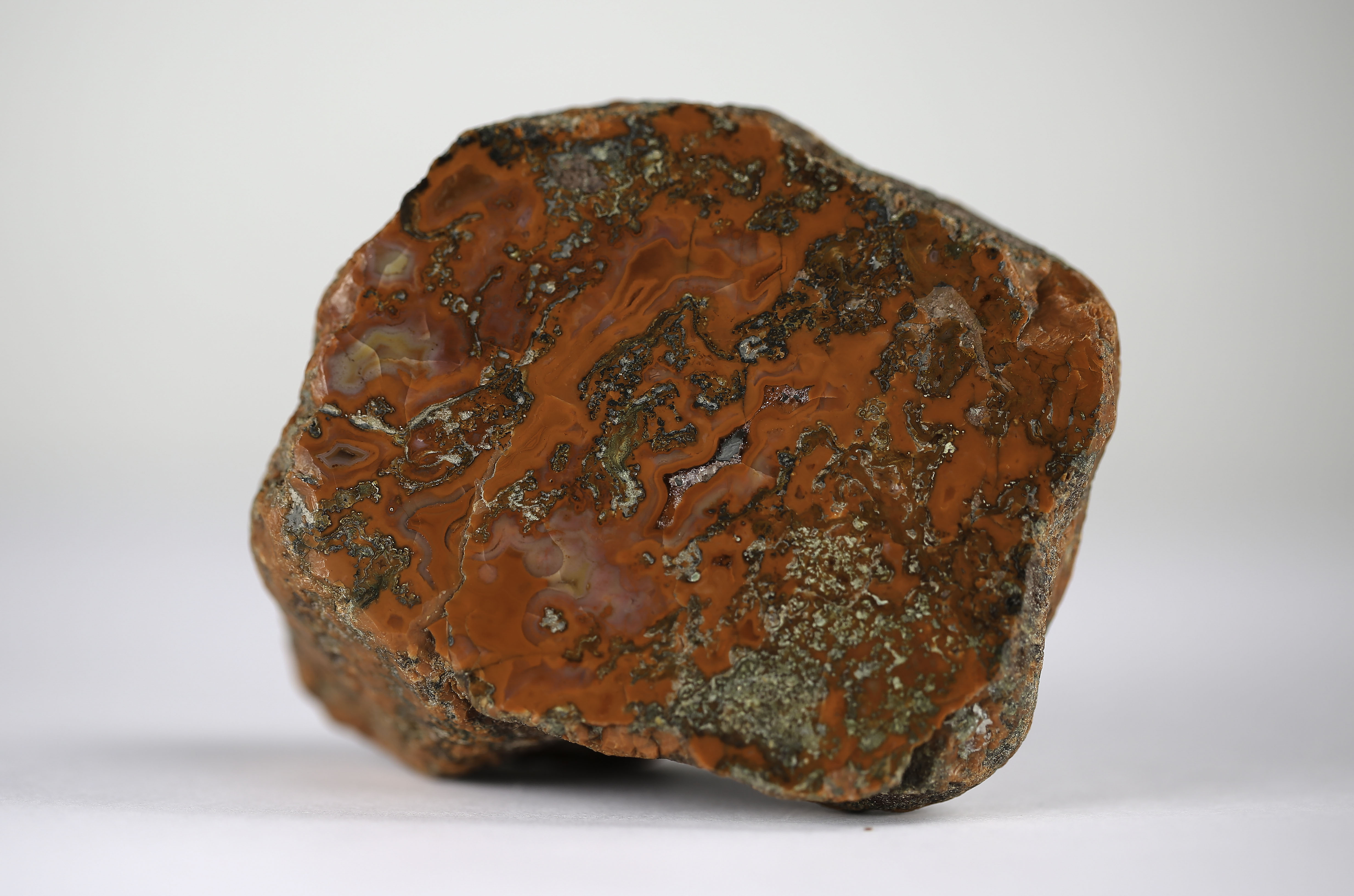
Bloodstone from the Gem-A Archives, photographed by Henry Mesa.
Bloodstone, a dark green stone speckled with red, is the kind of jasper with which most people are familiar. It is widely used for jewellery, utensils and small carvings. Ribbon jasper is a rarer variety with parallel bands of green and red.
Advice for Gemmologists
Confident familiarity with polycrystalline quartz gems is best achieved by looking at as many examples of these stones as possible, in gem dealers’ stocks, jewellery displays and museums. Photographs in books can be very useful and personal collections can be made, since most of these stones are relatively inexpensive.

Aventurine beads from the Gem-A Archives.
Conclusion
It is well to keep in mind that most variety names were given by traders to communicate with their customers. Whilst there is a degree of consistency to the names, especially of the best-known varieties, adherence to rigorous definitions should not be expected, and much confusion may be avoided by accepting that boundaries between varieties may be uncertain.
This does not, of course, excuse the practice of using quartz variety names for unrelated materials. The term jasper, for example, is misused for some limestones and volcanic rocks which are not quartz gems at all.
Main image: Quartz (aventurine) photographed by Pat Daly.

